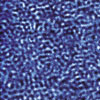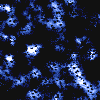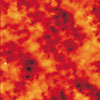| Introduction to STM | Instrumentation | Results / Projects |
| Gallery | Publications | Team |
Recent Results
Measurements on InAs(110)
Three-Dimensional Electron Systems

At B=0 T, we find simple Bloch states
which are scattered at ionized dopants.
The atomic structure of the Bloch states
can be reproduced by a calculation within
the local density approxiamtion (FLAPW).
The long range part of the scattering states
is reproduced within the WKB model. ![]() ... read more.
... read more.

In magnetic field, in particular in the extreme
quantum limit, we see a transformation into
drift states which is not complete up to B=6 T.
It is accompanied by the development of a
quadratic Coulomb gap at the Fermi level.
![]() ... read more.
... read more.
Two-Dimensional Electron Systems

At B=0 T and relatively low disorder,
we find a much more complicated
and much more strong standing wave pattern
than in the three-dimensional electron system.
The corrugation increases by a factor of
twenty with respect to the three-dimensional
system and is not related to single donors anymore.
The data can be qualitatively reproduced
within a single-particle calculation showing
that the interaction with disorder is dominant.
In simple terms, the patterns reflect the tendency
of the two-dimensional electron system
to weakly localize. ![]() ... read more.
... read more.

At larger disorder the system breaks up into
droplets, which show s-like and p-like quantum dot
states. Percolation at higher energy is observed.
![]() ... read more.
... read more.

In magnetic field, drift states are formed at low disorder.
As expected they run along equipotential lines of the sample.
These states are
clearly localized at the edge of the Landau levels,
however the particularly interesting extended
state in the center of the Landau level has not
been measured individually due to the limited
energy resolution. ![]() ... read more.
... read more.

The preparation of a 2DES appropriate
for STS measurements is described ![]() here.
here.
One-Dimensional Electron Systems

One-dimensional systems containing one or two subbands
have been found below charged step edges. Their local
density of states shows nearly 100 % corrugation pointing
to weakly localized states. Alignement with the disorder
potential is directly observed.
Although the system exhibit g-factors as low as 0.7 and
the electron-electron interaction strength is strong with
respect to disorder, we do not find any indications for
Luttinger properties. ![]() ... read more.
... read more.
Zero-Dimensional electron systems

Quantum dots are induced by using the tip as
a local gate with respect to the sample. Quantized
states are observed as peaks in dI/dV-curves.
Since the quantum dot can be moved with the tip
impurities can be palced into the quantum dot
and the response of the energy spectrum on
the disorder is probed.
In magnetic fields the states are identified
as spin polarized Landau states. Their
interaction with impurities, in particular
the response of the spin splitting
to the disorder indicates nicely visualizes
the non-locality of the exchange interaction.
![]() ... read more.
... read more.
Measurements on Ferromagnets

In order to study ferromagnet/semiconductor
interfaces, we investigated ferromagnetic Fe
islands by spin polarized STS. The thicker islands
exhibited a vortex structure and the vortex core
has been directly displayed. It is found to be in
excellent agreement with predictions from micromagnetic
theory originating from 1965. ![]() ... read more.
... read more.
Projects
Two-Dimensional Electron Systems:
- multifractality in the quantum Hall regime
- influence of small magnetic fields on weakly localized states
- Imaging stripe states at half filling
One-Dimensional Electron Systems:
- spin density and charge density wave in Carbon nanotubes
- scattering at defects
Zero-Dimensional Electron Systems:
- wave function mapping in strain induced InAs quantum dots
- wave function mapping in chemically prepared nanocrystals
Ferromagnet/Semiconductor Interfaces:
- spin structure in ferromagnetic semiconductors
- Rashba splitting in 2D systems
- spin scattering at the interface
Introduction to STM | Instrumentation | Results / Projects | Gallery | Publications | Team
impressum © copyright 2002 by group R - university of hamburg
